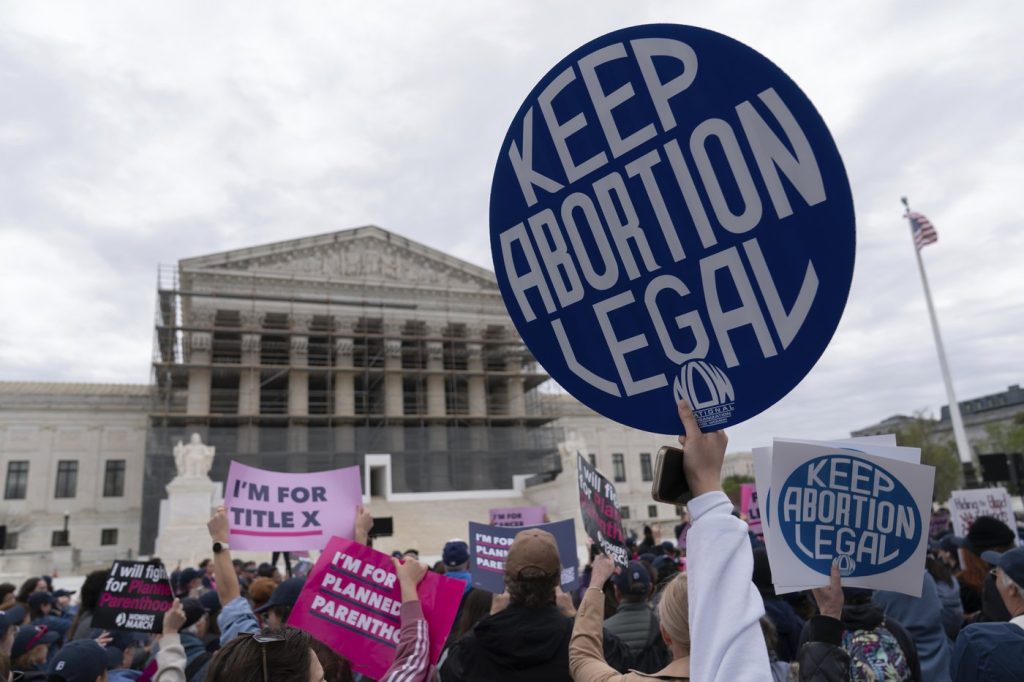In 2024, fewer individuals crossed state lines to obtain abortions compared to the previous year, according to a recent survey conducted by the Guttmacher Institute, an organization advocating for abortion rights. The report, released on Tuesday, indicates that while the overall number of clinician-provided abortions in states where the procedure is legal rose slightly by less than 1% from 2023 to 2024, the number of people traveling to other states for abortions decreased by approximately 9%.
This report serves as a crucial update on the evolving abortion landscape in the United States since the Supreme Court's decision to overturn Roe v. Wade in 2022. This ruling eliminated the federal constitutional right to abortion, allowing states to implement various bans and restrictions.
The Guttmacher Institute estimates that in 2024, there were approximately 1.04 million abortions performed, reflecting a modest increase of about 1% from the previous year. Despite several states enacting abortion bans, studies have shown an overall increase in the total number of abortions since the Dobbs decision.
It is important to note that Guttmacher's statistics do not account for self-managed abortions. These may include individuals accessing abortion pills through community networks, international pharmacies, or telehealth services from providers based in states with laws that protect those offering such medications. A separate survey has reported a rise in telehealth-prescribed pills being sent to states with bans, with this method accounting for around 10% of abortions in the U.S. by the summer of 2024.
Isaac Maddow-Zimet, a data scientist at Guttmacher, highlighted that even with the increase in reported abortions, it is likely that some individuals seeking to terminate a pregnancy may be unable to do so. He emphasized that while telehealth options provide access for some, they do not represent a feasible solution for everyone.
In terms of interstate travel for abortions, the number declined from nearly 170,000 to about 155,000. This shift is not uniform across states. For example, in Florida, approximately 12% of abortions in the first half of 2023 were provided to individuals from out of state. Following the introduction of a ban on abortions after six weeks in the second half of 2024, this figure dropped to about 2% for out-of-state patients. Conversely, states like Virginia and New York saw an influx of patients seeking abortions after Florida's restrictive law was implemented.
Solitary constraints on travel to states like Minnesota may correlate with the reopening of abortion clinics in Wisconsin. In Kansas, the number of out-of-state patients seeking abortions has risen as clinic capacities expanded.
However, the impact of abortion bans varies significantly based on distance from clinics. A working paper published in March reported increased birth rates from 2020 to 2023 in counties farther from abortion clinics, with more pronounced effects among Black and Hispanic women, those with lower educational attainment, and unmarried individuals. Caitlin Myers, a professor at Middlebury College and co-author of the working paper, remarked that the evidence reinforces the idea that distance plays a crucial role in access to reproductive health services.
Regina Davis Moss, president and CEO of In Our Own Voice: National Black Women’s Reproductive Justice Agenda, stated that these bans are not just policies but direct assaults on bodily autonomy. She also highlighted how these regulations intensify existing disparities in maternal mortality rates, particularly among Black women, who faced a mortality rate at nearly 3.5 times that of white women in 2023.
The ramifications of these bans include a predicted increase in birth rates, which, according to Moss, could further escalate maternal and infant mortality rates, exacerbating healthcare inequities. Bree Wallace, director of case management at the Tampa Bay Abortion Fund in Florida, added that many individuals seeking abortions are often ignorant of their options and the feasibility of traveling out of state. Many focus solely on hearing terms like "ban" or "six-week ban" without realizing there may still be avenues available to them.










